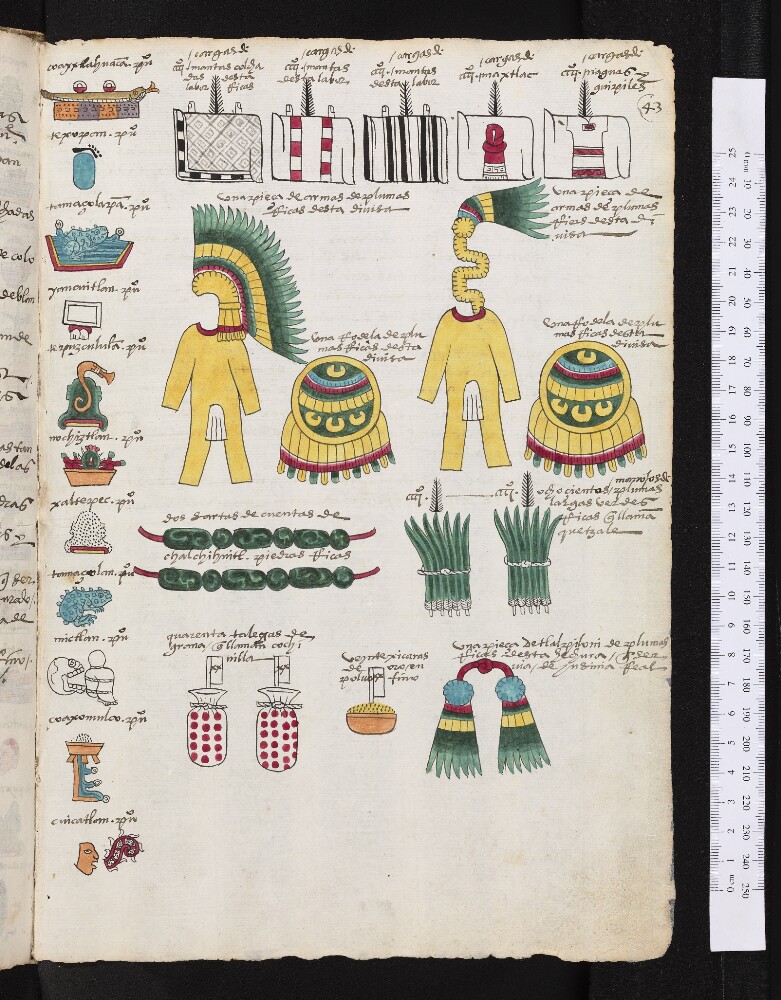Some of the earliest representations of cochineal appear in the records of tributes imposed by the Mexicas or Aztecs on the peoples of their vast empire. The dye made its first journey across the Atlantic among the gifts sent by Hernán Cortés to Emperor Charles V. By the 17th century, cochineal, a monopoly of the Hispanic monarchy, constituted an extraordinary source of revenue, surpassed only by silver. Like silver, it travelled the route of the Spanish galleon. Stocked in leather pouches, cochineal arrived first in the Spanish harbours of Cadiz and Seville, whence it was traded and distributed to the world’s most renowned textile producing centres, such as Toledo, Segovia, Florence, Milan, Lyon, Amsterdam and Venice, and as far as Cairo and Goa. It was only after the invention of cheap, mass-produced artificial dyes in the mid 19th century that cochineal lost its global relevance.
COCHINEAL TRIBUTE
Two cochineal bags, filled with red dots, are represented bottom left. Codex Mendoza, MS Arch. Selden A.1, fol. 43r, c. 1540 (courtesy of Bodleian Library, University of Oxford).
Miruna Achim
Further reading
- Alzate y Ramírez, J.A. (1991) Memoria sobre la naturaleza, cultivo y beneficio de la grana [1777] (Mexico City: Archivo General de la Nación).
- Butler Greenfield, A. (2005) A Perfect Red: Empire, Espionage, and the Quest for the Color of Desire (New York, NY: HarperCollins Publishers, Inc.).
- von Humboldt, A. (1811) Essai politique sur le Royaume de la Nouvelle Espagne (Paris).
- Moreno de los Arcos, R. (1989) Linneo en México: la controversia sobre el sistema binario sexual (Mexico City: UNAM).
- Museo del Palacio de Bellas Artes (2018) Rojo mexicano: la grana cochinilla en el arte (Mexico City: Secretaria de Cultura).
- Padilla, C., and B. Anderson (2015) A Red Like No Other: How Cochineal Colored the World (New York, NY: Skira Rizzoli).
- Phipps, E. (2010) Cochineal Red: The Art History of a Color (New York, NY: Metropolitan Museum of Art/Yale University Press).





